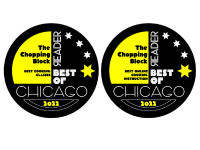Growing up in Iowa we didn’t grow or use fresh herbs. I think many people especially in the Midwest never experienced them, at least of my generation. Once chefs and home cooks everywhere started having access to the fresh stuff, I started to hear people say “Never use dried herbs, they have no flavor”! Perhaps the dried parsley you bought eight years ago that's still sitting in the pantry should warrant that reaction… no judgment. However, it might time to graduate to the world of fresh dried herbs!
At The Chopping Block, we have been teaching a class called Flavor Dynamics for years. We go into the difference between spices and herbs, teach you how to cook with both as well as teach you about the dynamics of flavor.
One point I want to extract from that class is that there are 2 categories of herbs: resinous and fine herbs. Resinous herbs are ones that have a higher concentration of volatile oils such as, oregano, marjoram, thyme, sage, and rosemary. Fine herbs have a lower concentration such as basil, tarragon, mint, parsley, dill, and chervil. It works like this: when you dry an herb you are concentrating the volatile oils therefore the herb's flavors are more concentrated. That's why you always use less dried herbs than fresh herbs when substituting in a recipe.
It might also make sense to you that the herbs with more volatile oils in them would be more flavorful and hold that flavor longer than herbs that don’t. Therefore resinous herbs will be more flavorful and keep that flavor longer compared to fine herbs. I never like to use store-bought dried fine herbs. Basil and tarragon are passable but dill, parsley and chervil lack any essence of their fresh counterpart and offer little of the delicate nature of their fresh state.
As we enter the cold season in the Midwest, it is the perfect time to harvest your herbs and hang them to dry.
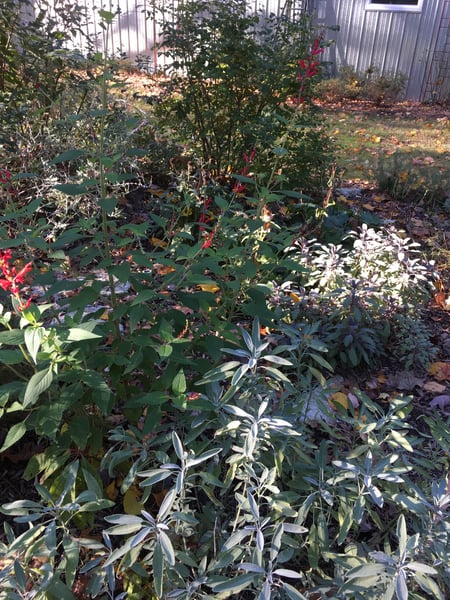
The air is chilly and the herbs dry well in that environment compared to the hot, humid summer but if you're drying inside your house the time of year doesn’t matter because your house is temperature controlled. I have a 3-season porch that works great prior to freezing temperatures.
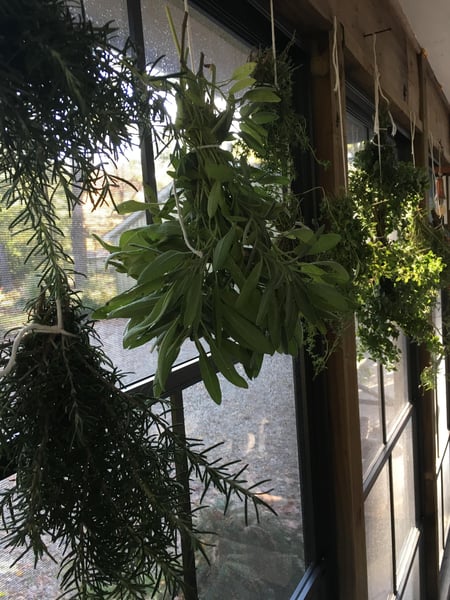

How to Dry Herbs
1. Cut the herbs if possible with some stem attached, like a bouquet.
2. Remove all debris such as leaves, twigs or weeds. They may end up looking a lot like your herbs after they dry!
3. Gather the herbs in bunches that leave a little airspace between the herbs.
4. Tie the stems with twine or string and leave enough twine so that you can hang the herb bunch.
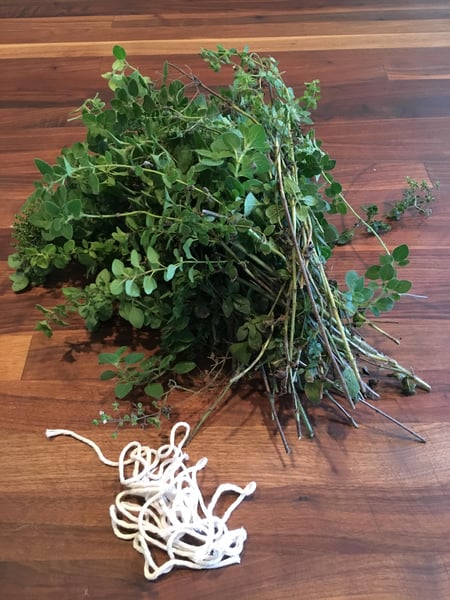
5. Rinse the herbs as needed. Ground covering herbs such and oregano and thyme lay in the dirt and have a lot of bugs and debris in them. Herbs like sage or basil can sit very high off the earth and be very clean and as long as you haven’t been spraying your herbs with insecticides, you might get away without washing them.
6. Hang the bunches of herbs in a cool, dry place. You need space in between all each bunch for airflow, so don’t overcrowd.
7. Once dry, simply pick the leaves off the stems and place in jar with a tight-fitting lid.
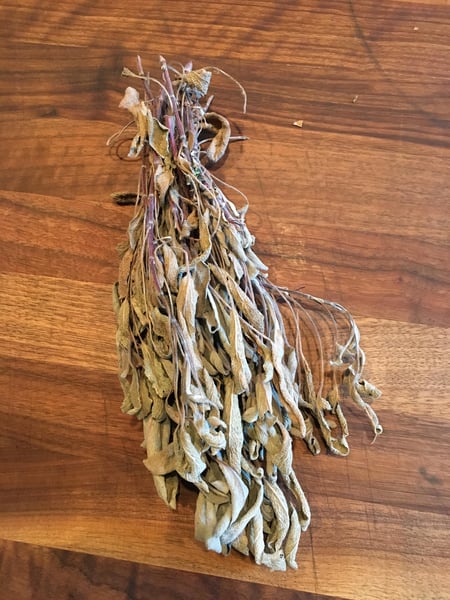 How do you know when they are dry enough? You will know when you start to remove the leaves from stems. If they don’t come off easily and feel very dry then just put the twine back on and hang them back up.
How do you know when they are dry enough? You will know when you start to remove the leaves from stems. If they don’t come off easily and feel very dry then just put the twine back on and hang them back up.
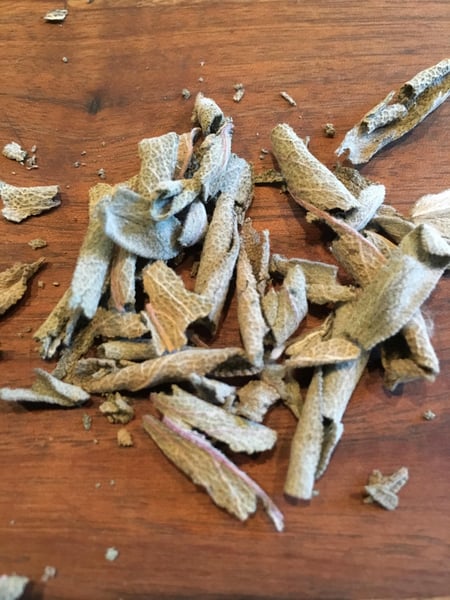
Some herbs like tarragon dry very quickly in about two weeks, because they have fine delicate leaves that are naturally separated. Others like sage take a lot longer, maybe 2 months, because they have very thick leaves with a dense leaf pattern.
Now that you have a pantry full of stocked fresh dried herbs you are ready for the fall and winter season. Dried herbs are especially well-suited for moist cooking methods like soups, stews and braised dishes. The concentrated volatile oils release slowly and don’t evaporate like fresh herbs so use your dried herbs with confidence! Whatever herbs you don’t use this winter you can grind up next spring and make some delicious rubs for grilling season.
Join us for our demonstration class Autumn Soups and Stews coming up at Lincoln Square on Sunday, November 26 at 10am. Braising Boot Camp returns in February, and Flavor Dynamics class is back in January. Reserve your spots now!
In the meantime, put your new knowledge of herbs to use preparing Thanksgiving dinner. I'll be demonstrating techniques live during the McDonald's Thanksgiving Parade on WGN-TV. Be sure to tune in for last-minute tips to help your preparation day go smoothly. Download our Thanksgiving Survival Guide for everything you need to know about preparing the big feast.









